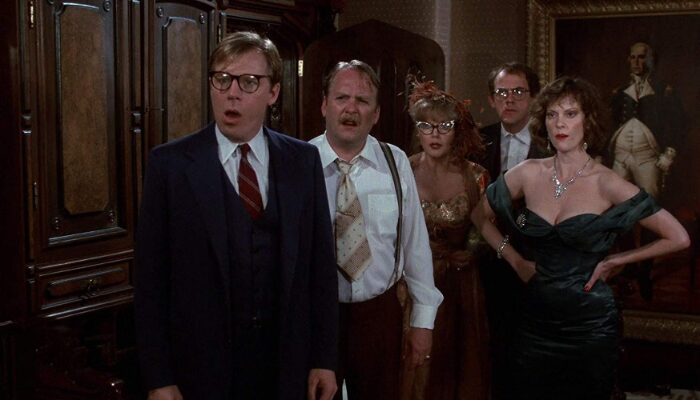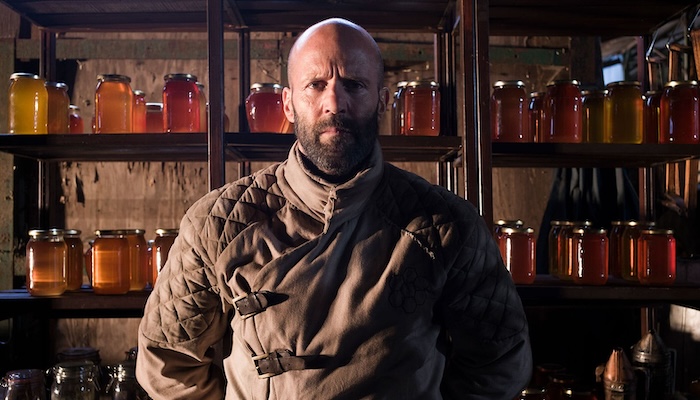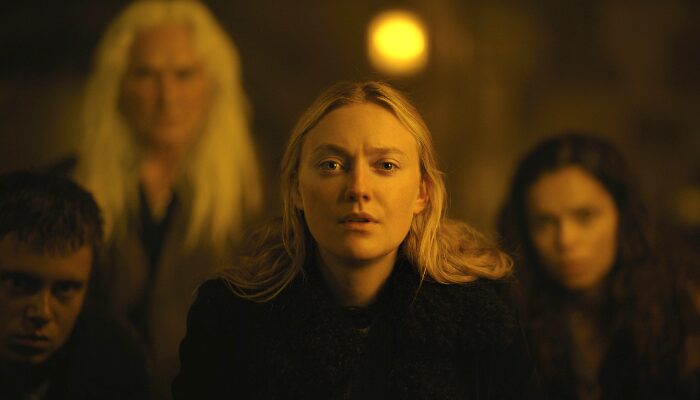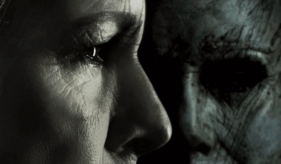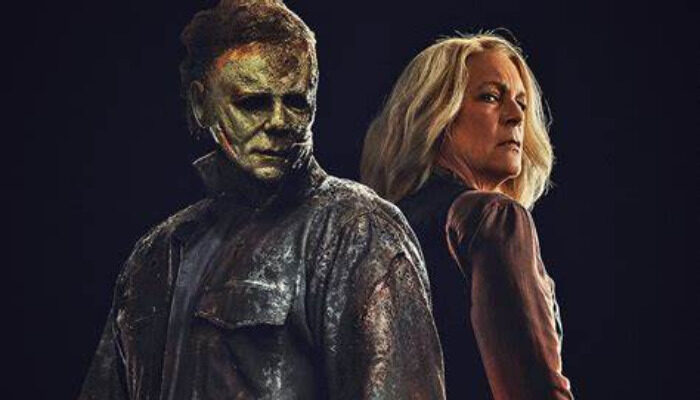Film Review: HALLOWEEN (2018): One of the Better Sequels; A Mixed Bag of Writing (From Good to Horrid)
Halloween 2018 Review
Halloween (2018) Film Review, a movie directed by David Gordon Green, and starring Nick Castle, Jamie Lee Curtis, Judy Greer, Virginia Gardner, Will Patton, Toby Huss, Miles Robbins, Jefferson Hall, Haluk Bilginer, Andi Matichak, Omar J. Dorsey, Christopher Allen Nelson, James Jude Courtney, Dylan Arnold, and Drew Scheid.
Halloween did so many thing right that the hackneyed tropes that meander in its screenplay can almost be overlooked. From its outset, the supernatural aspect of the Halloween film franchise is toned down and replaced with institutionalization and real world consequences for unlawful actions. The re-write, Michael Myers (Nick Castle) being captured the night of his original killing spree and having been imprisoned in an insane asylum for forty years, brings the Halloween series back to Earth. Gone is the Curse of Throne, though the ability for Michael Myers to resurrect at will, like Himuro Gemma in Ninja Scroll, still seems present but to a subtle degree (in this incarnation, Michael could simply be unconscious and his body extremely resilient – which seems in-line with his above-average strength level).
The most invigorating aspect of Halloween is the extend period of time Michael Myers is shown without his classic mask covering his face. Director David Gordon Green never makes the mistake of fully showing Michael Myers’ human face. Instead, Green teases the viewer with aspects of that horribly calm visage, especially Michael Myers’ disfigured eye from the first Halloween film.
The benefit of the extended no-mask time period in Halloween is that it turns Michael Myers into a human being and not a mythical killing machine i.e. the Boogeyman. That, combined with Myers’ aging, has the effect of raising the stakes in the film for the antagonist – he’s mortal, kill-able, even though he doesn’t seem to be.
Halloween is not a mere slasher film. It is a character study of two traumatized individuals. The first is Laurie Strode (Jamie Lee Curtis) and the second is Dr. Ranbir Sartain (Haluk Bilginer). Whatever Strode’s personality would have been if she had never met Michael Myers and he had never massacred her teenage-hood friends has been completely overwritten by a frightened, vengeful, and apoplectic persona. That persona has remolded Laurie Strode into an army-of-one. Michael Myer’s created the version of Laurie Strode in Halloween by trapping her in the past (a side-effect of his original killing spree). Michael Myers also created the version of Dr. Sartain in Halloween through Myers’ mere presence and decades of absolute silence. Sartain wants to see behind the veil of Michael Myers so badly that it has corrupted him but unlike Laurie Strode, it hasn’t made him stronger. On the contrary, it’s made Dr. Ranbir Sartain weaker through dependency on Michael Myers and what Myers may give him through an illusive therapeutic breakthrough.
It is nuances like the aforementioned that make Halloween shine in a horror genre where it is extremely difficult to reinvent the wheel. Some of those old spokes did show up in Halloween (unavoidable) while others were utterly nonsensical and didn’t have to be in the film.
The lion-trapped-with-the-meal scene in Halloween – when Michael Myers is trapped in the back seat of the police car with Allyson Nelson (Andi Matichak) – is compelling at its outset but quickly descends into a preposterous non-reaction by Myers. Like Eliza Dushku being tied to a bed by inbred hillbilly mutants in Wrong Turn and the inbreeds not having sex with her, the fact that Myers has a kill target inches from him, doesn’t instantly kill her but instead goes after harder target Dr. Ranbir Sartain through a reinforced barrier, is idiotic, a story-grating aberration, and horrid writing. This scene in Halloween is an example of subverting a viewer’s expectations in a completely unrealistic and unrewarding way (think the entirety of Star Wars: The Last Jedi).
The viewer gets it. Allyson Nelson is comely and few want to see a pulchritude girl ripped to pieces (except for hardcore and discerning horror film fans – Martyrs is a film on their favorites list). Writers Jeff Fradley, Danny McBride, and David Gordon Green want Nelson to be their “survivor girl” but when you put a target in a situation like that with a killer that kills on-sight, the target’s dead. There is no escaping that simple fact, unless you are a clever writer. In this case, the writers give absolutely no reason before, during, or after the scene to explain why Michael Myers bypasses the easy kill (Nelson) for the harder kill (Sartain). It literally makes no sense and the illogic of it at first tears then pours itself into Halloween through this misguided narrative choice during what could have been a pivotal scene in the film. Why put Allyson Nelson in that scene, it that position, and then do nothing with it? What is the point of her being there? What is the point of that segment of the scene in the film?
Also confounding in Halloween is the complete lack of proper response from the Haddonfield, Illinois police force when they find out that Michael Myers has escaped. Why in the hell don’t the police warn people via: a.) local TV news (breaking in on all TV broadcasts), b.) text message alerts, c.) email alerts, and d.) driving around in squad cars and telling everyone to get off the streets. That a serial killer that kills on Halloween has just escaped from a mental institution and is most-likely heading to town?
This part of Halloween is so moronic the viewer watches each narrative domino fall with gnawing incredulity – Sheriff Barker (Omar Dorsey) finds out serial killer Michael Myers is on the list of missing patients, jokes about not cancelling Halloween then laughs (why is this funny?), finds a truck stop where more people have been slaughtered by Myers – and the viewer wonders when is Sheriff Barker, or any other Haddonfield police officer present, is going to do the obvious and warn Haddonfield residents that Michael Myers has escaped and might be heading to town?
The Haddonfield police department is legally negligent for not warning people (à la Jaws), hours after-the-fact, that Michael Myers has vanished from state custody, and for letting people blithely traipse into an abbattior i.e. the streets of Halloween-clad Haddonfield, including gaggles of little children, with a manic on the loose.
The writers of Halloween purposefully placed all of these glaring plot holes into their film. They wanted kids trick-or-treating on the streets of Haddonfield, in the backdrop of Halloween, while Michael Myers went on his new killing spree during their film. To facilitate that, the writers of Halloween had the police department not do the blatantly obvious – inform Haddonfield residents of the insane asylum transport crash, the escapes, the killings, and that Michael Myers might either be heading to Haddonfield or may already be in Haddonfield. That would have caused the high school dance to be immediately cancelled and for every parent to pull their children from the streets, not allowing any of them to go trick-or-treating (all sensible and logical reactions). The writers of Halloween couldn’t have that. They wanted their Halloween atmosphere. They wanted their festive, macabre ambiance. That is why the police in Halloween were made intentionally and absurdly inept. That is why the Haddonfield police force didn’t do or say anything about the insane asylum crash, the escape, or the killings until Myers showed up in Haddonfield and had already begun his new killing spree.
This is pathetic writing on the part of Halloween‘s screenwriters.
Solution – the writers of Halloween should have had the escape and the out-of-town killings not be discovered and reported to Haddonfield PD until after Michael Myers had arrived in Haddonfield (a violent storm disrupting radio signals, knocking down trees, phone lines, power lines, and cell phone towers) and had already begun his new killing spree with candle-lit Halloween festivities in full swing.
Though there is abhorrent writing and plotting present in Halloween, the good writing does edge out the bad writing in the film, especially when it is combined with well-orchestrated scenes and dynamite cinematography. The security lights scene in Halloween epitomized this achievement by Halloween‘s writers and film crew.
From the moment the scene begins, the viewer expects one thing, the easy kill of a hapless fool, and is given something far more gratifying. The writers and film crew of Halloween use the environment of the cage Michael Myers and Oscar (Drew Scheid) found themselves locked in to the situation’s full advantage. As the lights shut off and on and Michael Myers gets closer and closer to his prey, tension rises with each iteration of the sequence. It is wonderful. As Myers calmly walks up to Oscar, methodically changing his grip on his knife (already envisioning how he is going to kill Oscar), the scene reaches its peak. It isn’t about the kill in this scene. It is the set up for the kill and the result of that setup that makes the scene so memorable.
And then that momentum, that visual and tension height, is squandered when Allyson Nelson sees Michael Myers in the flesh for the first time, sees Myers’ newest kill, sees the cage that Myers is locked it, and runs away. It is such a waste of another potentially pivotal moment in Halloween. Why not have Allyson say “Uncle?” (though the two of them being related would require the existence of Halloween 2, which is one of the many Halloween films ignored by this film). Why not have Allyson Nelson be in horrified awe? Why not have Allyson Nelson be intrigued by the mythic beast that she has heard so much about from her grandmother i.e. morbid curiosity. Instead, Allyson Nelson runs, the guttural human reaction (many would be asking why she didn’t run if she didn’t do so) but not the narratively-satiating one.
The stand-off at Laurie Strode’s house in the third act of Halloween, like the security lights scene before it, has a good setup and execution. Unlike the security light scene, however, this scene has a payoff at its conclusion. It is an astute move by Halloween‘s writers to have their main protagonist learn from her previous experiences and adapt (though the absence of body armor from Strode’s arsenal is extremely dubious and never explained). The hunting and stalking moments during the third act of Halloween are average yet effective, heightened by the presence of Strode’s modifications to her household, many of which slam shut with prison-like precision. It is when Karen Nelson (Judy Greer) begins verbally squirming with fear in Strode’s hidden bunker, sinking a hook into Michael Myers’ mind, luring him out into the open, that disregarded bits and pieces of narrative from the first two acts of Halloween culminate. Seeing Karen’s outer personality drop and her inner (or suppressed) personality take over in all its killer instinct, unsympathetic, uncompromising glory is the biggest surprise of the entire film and almost as well-laid a trap for the viewer as the true nature of the hidden bunker.
The three survivors staring into Micheal Myers’ eyes, and the darkness that resides behind his mask, is a seminal moment at the film’s conclusion, when Myers, encased in his chosen shroud, is his truest self. A smaller version of this moment could have happened between Michael Myers and Allyson Nelson at the conclusion of the security lights scene. Perhaps it didn’t so that it could be presented in an aggrandized form at the end of the film, at the end of the chase, and presumably, at the beginning of the end of Michael Myers’ life.
Will the fire actually kill Michael Myers? Who knows. The Shape has been known to be willy and crafty when it comes to its mortality.
Rating: 8/10
Leave your thoughts on this Halloween review and the film below in the comments section. Readers seeking more film reviews can visit our Movie Review Page, our Movie Review Facebook Page, and our Movie Review Google+ Page. Want up-to-the-minute notifications? FilmBook staff members publish articles by Email, Twitter, Tumblr, Google+, and Facebook.
Related Articles
FilmBook's Newsletter
Subscribe to FilmBook’s Daily Newsletter for the latest news!

